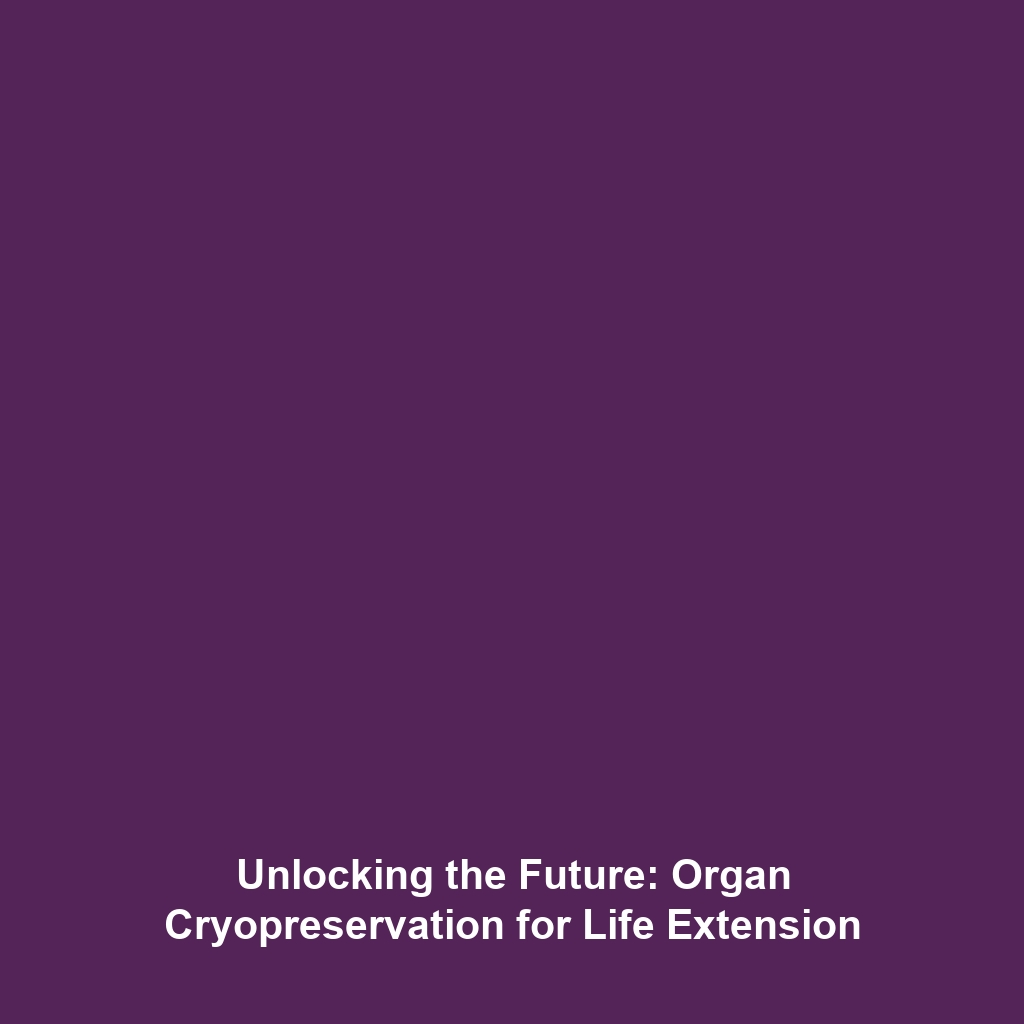Organ Transplant Potential: The Future of Cryopreservation in Life Extension
Successful organ cryopreservation may hold the key to revolutionizing the field of organ transplantation, providing a solution to the chronic shortage of available organs. As scientific advancements in cryonics and life extension accelerate, the ability to store organs for long-term use could reshape healthcare, paradigm shifts in transplantation, and potentially extend human life through improved medical interventions. This article delves into the significance of organ cryopreservation within the broader context of cryonics and life extension.
Key Concepts of Organ Cryopreservation
Understanding the principles of organ cryopreservation involves several key concepts:
- Cryoprotectants: Chemical agents that help to prevent the formation of ice crystals in cells during freezing.
- Vitrification: A process that turns biological tissues into a glass-like state without ice crystal formation, preserving structure and function.
- Revival Techniques: Innovations aimed at safely thawing organs and restoring their functionality for transplantation.
Organ cryopreservation fits seamlessly within the categories of cryonics and life extension, both fields focused on extending human life through innovative means, offering potential breakthroughs in treating various diseases and conditions.
Applications and Real-World Uses
The practical applications of successful organ cryopreservation are numerous, especially in the context of organ transplantation:
- Organ Banking: Establishing facilities that store preserved organs awaiting transplantation.
- Emergency Transplantation: Providing organs on-demand, which could dramatically reduce wait times for patients in critical need.
- Research and Development: Allowing scientists to study preserved organs collected over time, leading to advances in transplant techniques.
These applications highlight how cryopreservation can fundamentally change the landscape of organ donation and transplantation, making it a critical topic in cryonics and life extension.
Current Challenges in Organ Cryopreservation
Despite its promise, several challenges persist regarding organ cryopreservation:
- Technological Limitations: Current methods for organ preservation need further refinement to enhance survival rates post-thaw.
- Regulatory Hurdles: Navigating the complex regulatory frameworks for organ transplantation can impede research and implementation.
- Public Perception: Misunderstandings surrounding organ cryopreservation may lead to hesitancy in acceptance among patients and medical professionals.
Future Research and Innovations
Future research in organ cryopreservation is poised to bring about groundbreaking innovations, including:
- Advanced Vitrification Techniques: Developing improved methods that can preserve organ viability more effectively.
- Integration with 3D Bioprinting: Exploring how cryopreserved structures could be combined with bioprinted organs for patients with organ failure.
- Personalized Organ Preservation: Customized cryoprotectant solutions tailored for individual organ types.
Such innovations could redefine potential outcomes not only for organ transplantation but also for broader applications in cryonics and life extension practices.
Conclusion
In summary, the successful organ cryopreservation presents a transformative opportunity within the field of organ transplantation and aligns closely with the aspirations of cryonics and life extension. The ability to store organs for long-term periods could alleviate shortages and offer new therapeutic possibilities. For additional information on related topics, consider exploring our resources on Cryonics and Life Extension.

